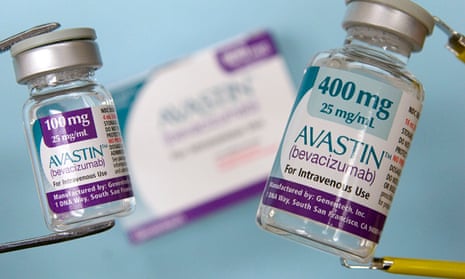Last week the National Institute of Clinical Excellence (Nice) ruled that offering abiraterone, demonstrated to extend life by up to four months in advanced prostate cancer, was not cost effective as a treatment when given before chemotherapy. Described as a “kick in the teeth” by Prostate Cancer UK, the decision comes after a similar Nice ruling the week before on kadcyla, shown to prolong life for a certain group of breast cancer patients. Blockbuster drugs with ever increasing benefit are expensive, and there are lots on the way.
To allow room for financing such drugs, first, doctors need to get back to the principle of prescribing drugs from the current arsenal of pharmaceuticals that they can be confident will offer benefit. A study from University College London and Public Health England suggests that inappropriate antibiotic prescriptions for viral coughs and colds is on the rise, raising the spectre of resistant strains of bacteria. For such common ailments, simple bed rest is often the best prescription. The lengthy appointment and explanation needed to justify the absence of a prescription requires time that today’s NHS doctors have less of. All too often, I fear, a prescription playing on the dogma of taking a medicine being a solution to an ailment, is just easier.A far more sinister trend, leading to doctors switching to newer, more expensive drugs over older, cheaper ones, is a growing feeling that in some cases we are being misled by drug manufacturers. To make the right choices for their patients, doctors need to be able to trust the evidence of patient benefit. Randomised controlled trials, considered the gold standard for testing the efficacy of a new drug against conventional treatment or placebo, are expensive and time consuming to run, requiring extensive drug manufacturer sponsorship to coordinate results across continents and thousands of patients.
In my own specialty, cardiology, the efficacy of various ‘next best thing’ drugs, seems to be questioned after concerns emerge regarding the transparency of the underlying manufacturer sponsored trials. For example, the US state department of justice is currently investigating the drug ticagrelor (approved for use in the treatment of heart attack in the UK in 2011) for the way patients’ outcomes were categorised in the original drug trial; these seem to vary according to the country of patient enrolment and who was monitoring the patients.
Another costly trend is so called ‘indication creep’ where we see a drug once only prescribed to a group of patients very likely to benefit, prescribed to patients who are likely to see less benefit. Statins provide the prime example. The decision by Nice to expand the indication for statin prescribing to a healthy section of society in the hope of preventing strokes and heart attacks has proved controversial.
Common to many such controversies is a distrust that prescribing in a patient’s best interests could be influenced by the commercial need for healthcare companies to make profit. Drug development is extremely costly and for each blockbuster there are 50 others, consigned to the dustbin at various stages of development. The final price tag attached to any new drug must reflect the market size (translating to the disease prevalence), the cost of developing the drug and any associated failures along the way, and profit some of which is invested into future research and benefit for patients. Of course, defining what profit is acceptable is contentious, but asking companies to drastically cut the cost of new drugs just as they reach the marketplace, akin to the situation with Kadcyla may be unrealistic. With the UK market constituting only a fraction of the global healthcare economy, companies are unlikely to simply lower product costs on demand.
Alongside talking to patients and explaining why the best treatment is not always in the form of pills, ensuring a sustainable drugs bill means funding only the real blockbuster drugs, not the ‘also ran’. To do so the medical profession must insist on the transparency of data during the drug development process, which requires an uneasy truce between patients and profit. Vilifying a small element of profit taking on success stories such as kadcyla – a breast cancer drug – may tempt companies to withhold negative data on less successful drugs to maintain profits.
By cutting the costs associated with prescriptions offering questionable benefit, the NHS, with its limited resources, will be able to fund the revolutionary drugs of tomorrow, for the patients who stand to benefit most.
Are you a member of our online community? Join the Healthcare Professionals Network to receive regular emails and exclusive offers.





